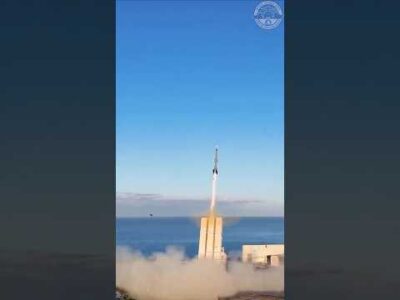A few days ago we heard that the Chinese Carrier Strike Group, headed by PLA Liaoning, successfully completed its training in combat at sea. A training operation that lasted more than 20 days, and saw China’s Carrier Strike Group carry out their operations in the Yellow Sea and the East China Sea, entering the western Pacific waters through the Miyako Strait and conducting a series of exercises there too.
China knows that in order to compete internationally it needs to develop a navy capable of protecting its national interests. Although there is a single national strategic view that binds the various sectors of the State, China’s Navy should act both in an integrated manner with the other Armed Forces and also on a multi-level and multi-domain footing.
Another factor that needs to be enhanced relates to interoperability with its Allies. In fact, even if there have been several joint exercises with the naval groups of the Russian Federation, this does not mean that their assets are fully interoperable both in terms of assets and more specifically at a doctrinal level. These elements might seem trivial but they are not at all, just think how difficult it can be to share information and certain specific data.
Furthermore, in order to develop joint procedures, it is necessary to operate jointly at sea for a long time and to initiate exchange programs.
Almost certainly, China is clear that in order to emerge fully as a superpower it must necessarily increase its maritime power. To do this, it must be able to project power that can also be achieved through the use of aircraft carrier groups (consisting of both combat components, such as destroyers, submarines, frigates, and amphibious assault units and logistic ones) that must be protected in an adequate way to be able to acquire the mastery of an expeditionary role, intrinsic to the Navy.
Another factor to take into consideration is the professionalization of the personnel who must be prepared and trained in the management of the means of transport they are using, which are technologically highly advanced and especially the information they receive, which must be processed quickly and which is not in the least comparable to that used in the past. The Chinese shipbuilding industry is continuing its work of expanding the number of combatant ships, but at the same time, it will have to follow the training of personnel both in terms of individuals and teams.
When it comes to the development of doctrine, it is necessary to keep in mind that they must also create an organization that knows how to use the aviation and naval tools at their disposition, that is to assemble and train the staff embarked on board the flagship units, from which they coordinate the fleet movements disseminate orders to the rest of the naval group.
At present, the Western navies probably have a few more points than China, so they will have to work to bridge the gap. By gap, we are not only referring to the technological aspect but also looking towards something else, such as the know-how that must be obtained to achieve certain objectives.
China has gained a lot of ground in the naval field, in fact in recent years there have been several deployments of naval groups in the Mediterranean or in other parts of the world (such as the Gulf of Aden and the Indian Ocean), precisely to signify the will to emerge and become a greater superpower.

China is still undergoing significant improvement ranging from warfighting to Maritime Security and defense engagement aspects. Defense engagement, which is developed through naval diplomacy and capacity & confidence building, was carried out to establish relations with more distant countries in order to create logistical bases, which can be used when necessary (for instance Djibouti and the idea to develop a naval base in the Gulf of Guinea, which could also be used to project into the Atlantic).
To date, China is aware that it is not at the same level as the Americans and the Western coalition in general, and therefore also carries out A2AD (anti-access/area denial) projects precisely in order to counter the advantage currently held by the Western coalition, which is not only limited to its technological advantage.
In conclusion, China has fully come to understand how naval capability should be considered an effective weapon at its disposal both in the diplomatic field and for more incisive actions, which can range from simple deterrence to actual coercive actions. In order to carry out this project, it will need to develop its own doctrines and procedures that are in common with its allies, in order not to find itself alone when opposing the countries of the West.
Antonio Bufis
- Twitter:@AntonioBufis
- Linkedin: Antonio Bufis















Comments